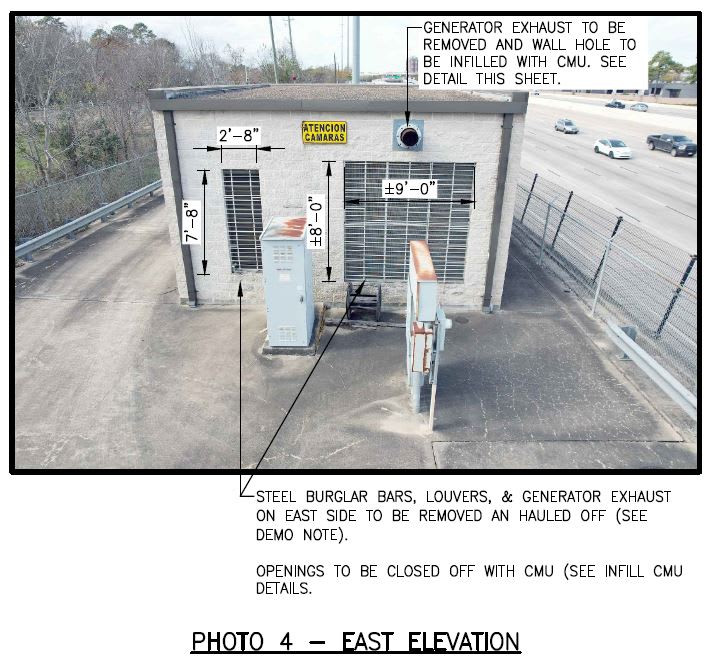JoelTXCive
Civil/Environmental
- Jul 24, 2016
- 933
We are doing some wall modifications to an existing split face CMU building.
There is an existing generator that is being removed from a building. Once it is removed, we need to ‘brick-up’ or fill-in all the existing vent & louver openings in the CMU.
Does anyone have a resource for repair details? I’ve tried googling, but not had much luck.
I’m not sure how I should reinforce or tie the proposed CMU into the existing. The only loads will be a wind load and possible vandal/thief load due to all the electrical equipment in the building.
I’m assuming I have fully grouted cells all around the existing openings that I can dowel into, but I don’t think I want to put dowels upwards into the lintel.
Attached is what I have come up with so far and below is a photo of the building.... Any input would be appreciated.

Thank you!
There is an existing generator that is being removed from a building. Once it is removed, we need to ‘brick-up’ or fill-in all the existing vent & louver openings in the CMU.
Does anyone have a resource for repair details? I’ve tried googling, but not had much luck.
I’m not sure how I should reinforce or tie the proposed CMU into the existing. The only loads will be a wind load and possible vandal/thief load due to all the electrical equipment in the building.
I’m assuming I have fully grouted cells all around the existing openings that I can dowel into, but I don’t think I want to put dowels upwards into the lintel.
Attached is what I have come up with so far and below is a photo of the building.... Any input would be appreciated.

Thank you!
